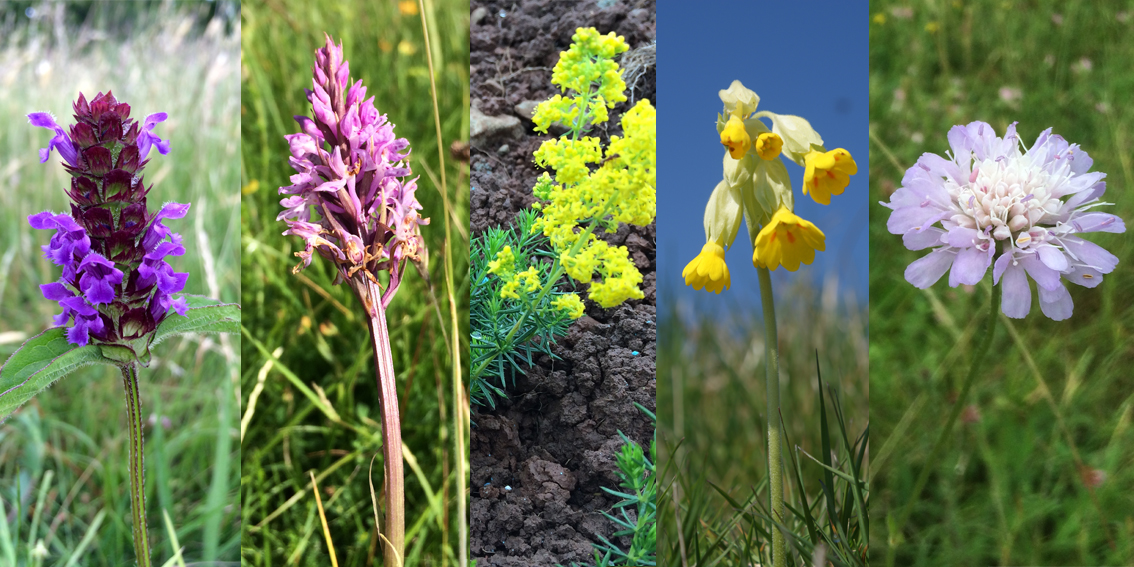
History: The field has been pasture for as long as historical maps show and certainly as long as anyone can remember. It has been farmed organically for at least the past 20 years. Before the vines were planted it was grazed by sheep which kept the grass down as well as fertilising the soil. Before the sheep, the field was grazed by cattle; before that nobody knows. Across the valley, only a mile away, is Pagans Hill which is the historic site of a Roman Temple. The Chew Valley is known for its Roman settlements so there is a possibility that the field was used as a vineyard around this time. The field directly below the vineyard has been an orchard for many years, again as far back as historical maps show, and apple trees were often planted on the same land after a vineyard had been grubbed up.
Topography: The field slopes down to the south and has a perfect orientation and slope to maximise the use of the sun and wind. The sun is vital for photosynthesis and ripening the grapes, while the altitude and aspect (partly exposed to the prevailing wind) should help reduce dampness and any resulting mildew/fungal disease – probably the biggest problem for grape growing in this part of the world. The slope has an average gradient of about 1 in 7 (14% slope) – amazingly this gives approximately 25% more solar energy during the growing season than if the field was flat.
Soil: The soil is a clay loam over limestone – an ideal combination for nutrients, minerals and taste. Apart from a slight excess of magnesium, the soil is relatively well balanced. The depth of the soil varies as it is on a slope with different gradients. At the top and bottom of the hill, where it is relatively flat, the soil is quite deep, while on the steepest part, just below the top, it is shallower where the soil has eroded over time. It will be interesting to see how these different conditions affect the vines.
Geology: The farm is on the lower reaches of the Dundry Ridge – a series of limestone and clay layers that form the hills to the south of Bristol. The field itself slopes over a limestone strata near the upper edge of the slope, at which point the limestone in the soil becomes more evident as a grey white colour compared with the red-brown of the clay loam. There are also pieces of Winford Red – a local red sandstone named after the village of Winford nearby – scattered across the field.
Landform: The field itself is split into three distinct planting areas, each of which hosts different vine varieties. Along the top of the field, running east-west, is a flatter area with the most beautiful views over the Chew Valley and lake. Below that lie the steeper east and west slopes which are separated by a gully a few metres deep, from where the stone for the farmhouse was quarried. The gully is filled with trees, shrubs and nettles and provides a dramatic visual break in the scene.
Boundaries: The field is surrounded by hedges of different ages – a young mixed hedgerow along the south boundary, a more mature hedge to the north with a newly planted woodland behind it, and mature hedges and trees along the east and west boundary. A wonderful collection of mature Lime trees is scattered along the hedgerows, with an old Oak marking the midpoint along the eastern edge. The gully has been planted with over 100 new trees – all native – to act as a windbreak as well as improve the habitat. Down the centre of the gully is a sea of nettles which will provide the base for one of the key Biodynamic treatments – BD504 (Stinging Nettle Compost, Tea and Ferment).
Ecology: By eating the grass each year the sheep have encouraged a beautiful array of wildflowers to develop in the sward including Self-heal, Orchids, Lady’s Bedstraw, Buttercups, Yarrow, Ox-eye Daisies, Cowslips and Vetch. The areas of wildflowers are in turn providing food for all sorts of insects, butterflies and moths. The birdlife is fantastic with Buzzards, Kestrels, Tawny Owls, Long Tailed Tits, Swallows and Goldfinches in evidence. We are planning to install an Owl Box in one of the trees to see if we can tempt Barn Owls to the vineyard, as well as smaller nestboxes along the field boundaries.






